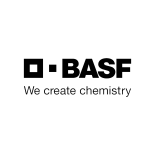The analysis and interpretation of large datasets, aka big data analytics, increasingly provides a means of achieving a competitive advantage as the amount of data available to businesses continues to grow in size and sophistication.
It is said that the volume of accessible data doubles every three years given the wealth of information captured by digital platforms, cellphones, sensors, surveys etc. As individuals and organisations, we are – often unknowingly – creating gigabytes of data every day which has huge value to those with access to this information.
The level of insight from big data analytics depends on how many fields of useful information are available and the quality (accuracy, completeness etc.) of this data. Sometimes companies are sitting on multiple datasets that are siloed by function or department (e.g. a CRM system which isn’t integrated with customer / technical support data or inbound marketing/sales platforms, etc.) or siloed by brand (e.g. a company that has been through a merger or acquisition, with separate datasets by brand).
Whether the analysis is based on in-house data alone, or also combines additional information from third parties or other external sources, big data can create value in numerous ways:













